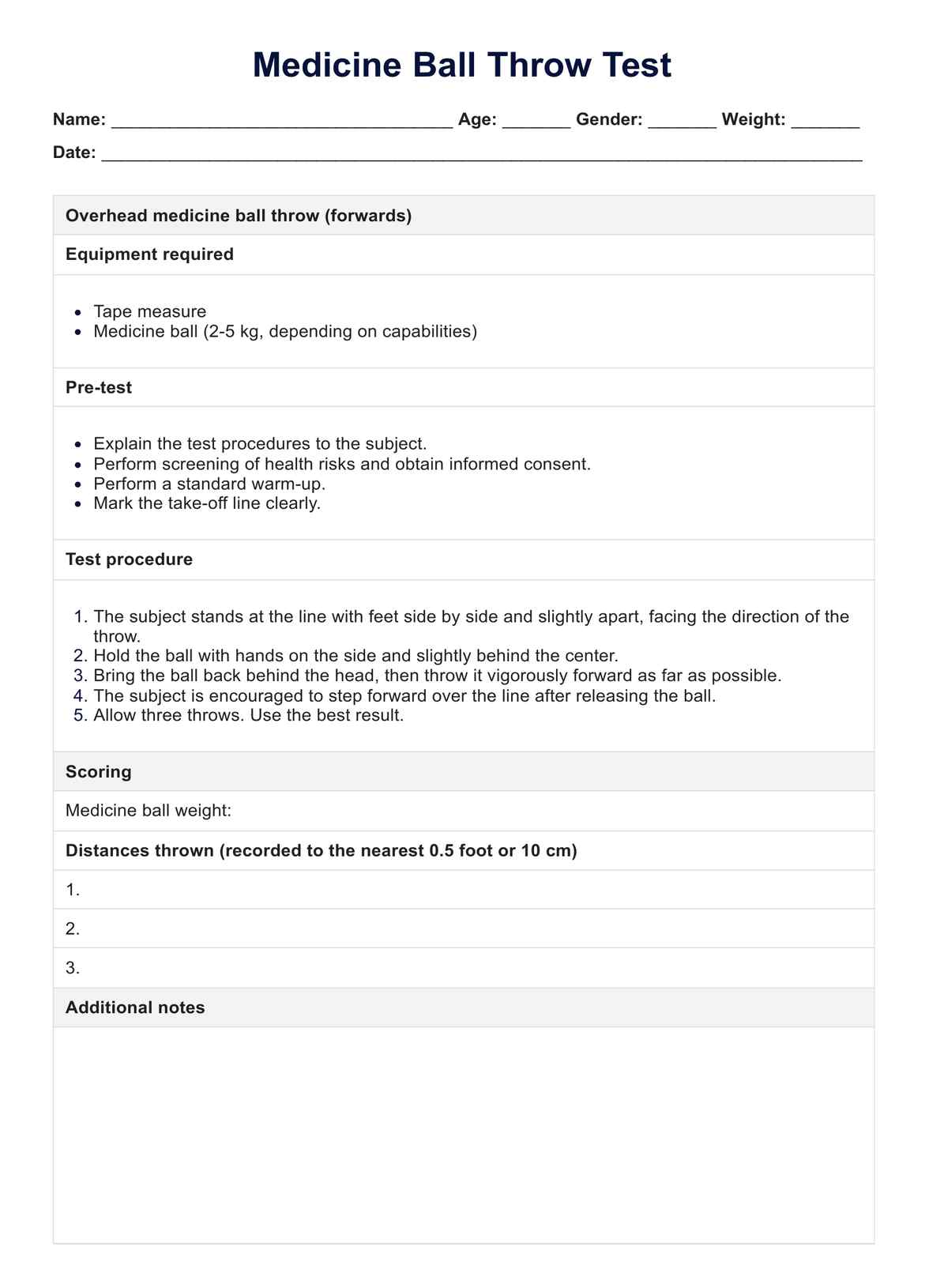The seated medicine ball throw typically uses a 4 kg (~8.8 lbs) medicine ball, although weights can vary based on the participant's capabilities and the specific protocol being followed.

Medicine Ball Throw Test
Discover the Medicine Ball Throw Test for evaluating strength and power. Learn about the test and how to interpret results with our guide and template.
Medicine Ball Throw Test Template
Commonly asked questions
The Medicine Ball Throw Test measures upper body strength and explosive power, evaluating how far an individual can throw a medicine ball under various conditions (overhead, seated, etc.).
A "good" medicine ball throw distance varies widely depending on factors like age, gender, fitness level, and the medicine ball training's weight. Performance should ideally be compared to the same individual's normative data or previous results.
EHR and practice management software
Get started for free
*No credit card required
Free
$0/usd
Unlimited clients
Telehealth
1GB of storage
Client portal text
Automated billing and online payments











